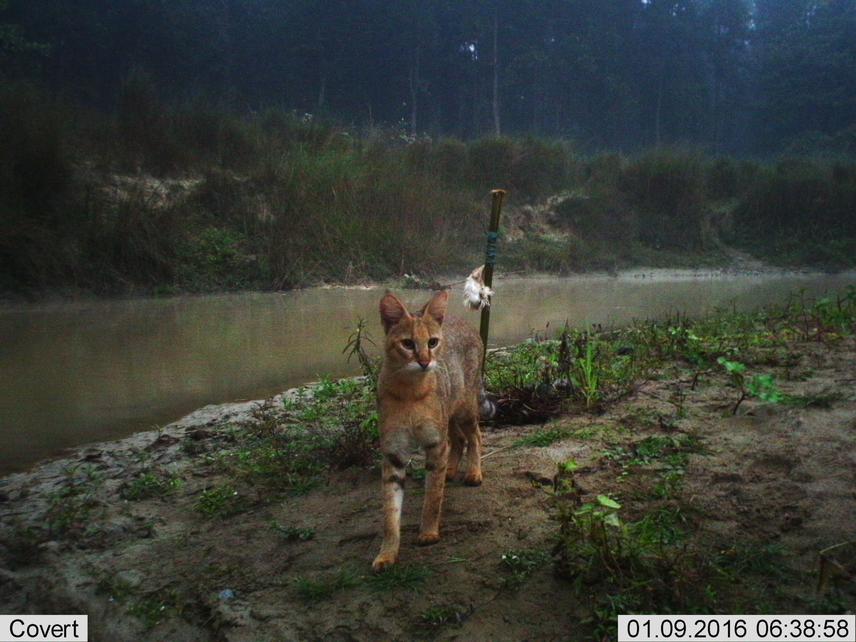Sagar Dahal
Other projects
28 May 2024
CITES Implementation in Nepal: Special Focus on the Illegal Trade of Felidae From Eastern Nepal
This goal of the project is to record fishing cat in Bankalwa after 179 years and find out the conservation threats to it in present time. It aims to start conservation practice of this endangered species in the area.

Jungle Cat recorded at the bank of Sunsari river inside Ramdhuni forest. Ramdhuni is a religious forest few 10 km east of Koshi Tappu Wildlife Reserve.
The main goal of this project is to re-access the presence of fishing cat in Bankalwa, Morang after Brian Hodgson recorded it in 1836 (Hinton and Fry 1928). I am currently working on documenting the presence of fishing cats outside the protected areas and access the anthropogenic threat along the foothills of Chure range throughout the Tarai of Nepal. The current project will access the presence of fishing cat distribution in Bankalwa and access anthropogenic threats. The collection of data from different sites of Tarai is essential for the proper designing of long term conservation of fishing cat through forming fishing cat conservation action plan and fishing cat research and monitoring protocol. Conservation of fishing cat cannot be successful without the participation of community. In a reconnaissance survey the local ethnic community "Satars" were found to kill cats for consumption.
After 179 years of discovery of fishing cat, we still don’t know the distribution range within Nepal as the habitat, ecology, distribution, conflict and threat to the fishing cat has not been explored (Dahal 2012). We have recently, produced a map of fishing cat distribution range within Nepal using Maxent software which shows potential distribution of fishing cat in Bankalwa which now has to be proved through ground truthing. In addition to that we will investigate the conflict with fishing with local ethnic community of Satars, and find out the current situation. It will also analyze the water quality condition of river and wetland of Bankalwa, Morang of Nepal. The potential problems with the long term conservation of fishing cats are:
1. gap on information on the distribution of this habitat specialist animal
2. decrease of fish population in the water sources due to over-fishing
3. killing of cats in retaliation and for consumption
4. pollution in the rivers and water sources
This is an important project to find out the presence/ absence of fishing cat outside the protected area in Eastern Terai of Nepal and validate the prediction. The information on fishing cat distribution and assessment of human fishing cat conflict is necessary to plan for the long term conservation of fishing cat. The awareness campaign will certainly start the conservation initiative in the study area. My work will contribute to link the past information and validate its important in present for the long term conservation of endangered (IUCN 2010) fishing cat in future.